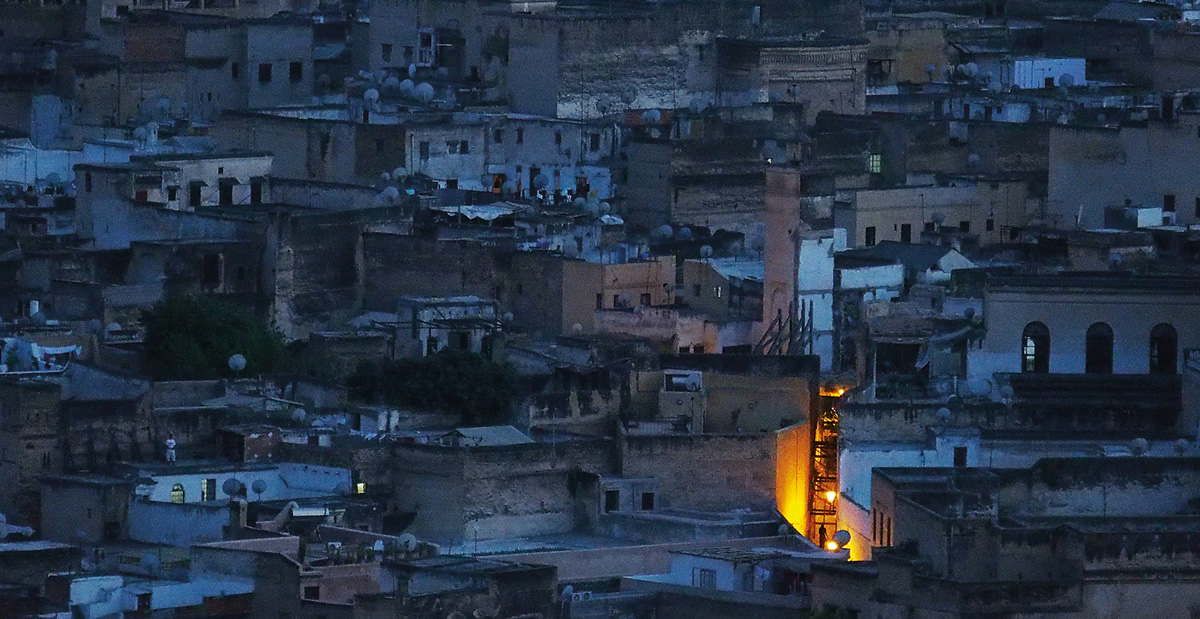
FirstLook: Learning from the Pattern-Masters
Welcome to FirstLook, which kicked off in the November/December 2015 print edition. We start in Fez, Morocco, as blue dusk settles in minutes after maghrib, or the sunset call to prayer. Find all FirstLook images amid others @aramcoworld on Instagram, as well as on our Facebook page.
Photo by Richard Doughty Video by Richard Doughty and Johnny Hanson
Walls, windows, doors and satellite dishes tessellate at twilight into a patchwork pattern in the madinah, or walled old city, of Fez, Morocco, as a pedestrian passes into view along one of the city’s typically narrow stone streets. Nestled in a valley crowned by gentle hills, Fez is one of the Islamic world’s great historic centers of the art of geometrically based patterns executed in tile, plaster, stone, wood and metal. Like all such patterns, those that adorn the mosques, madrassahs (schools) and sabeels (fountains) of Fez have their origins in simple, universal geometry that— through practice and elaboration—artists and craft workers developed into celestially intricate masterpieces. These adorn Fez in such numbers that the entire madinah is a UNESCO World Heritage Site. In May AramcoWorld editor Richard Doughty joined a workshop to learn firsthand from the city’s great works, starting with a straightedge, a compass, a pencil and paper. (And an eraser.)
You may also be interested in...

"Duet": Senegalese Double Portrait
Arts
“Duet” comes from the Latin root word duo which means two. The Duet series focuses on double portraits, a tradition in West Africa.
Ramadan Picnic Photograph by Zoshia Minto
Arts
On a warm June evening, people gathered at a park in Bethesda, Maryland, for a community potluck dinner welcoming the start of Ramadan..jpg?cx=0.5&cy=0.5&cw=480&ch=360)
Photo Captures Kuwaiti Port Market in the 1990s
History
Arts
After the war in 1991, Kuwait faced a demand for consumer goods. In response, a popular market sprang up, selling merchandise transported by traditional wooden ships. Eager to replace household items that had been looted, people flocked to the new market and found everything from flowerpots, kitchen items and electronics to furniture, dry goods and fresh produce.